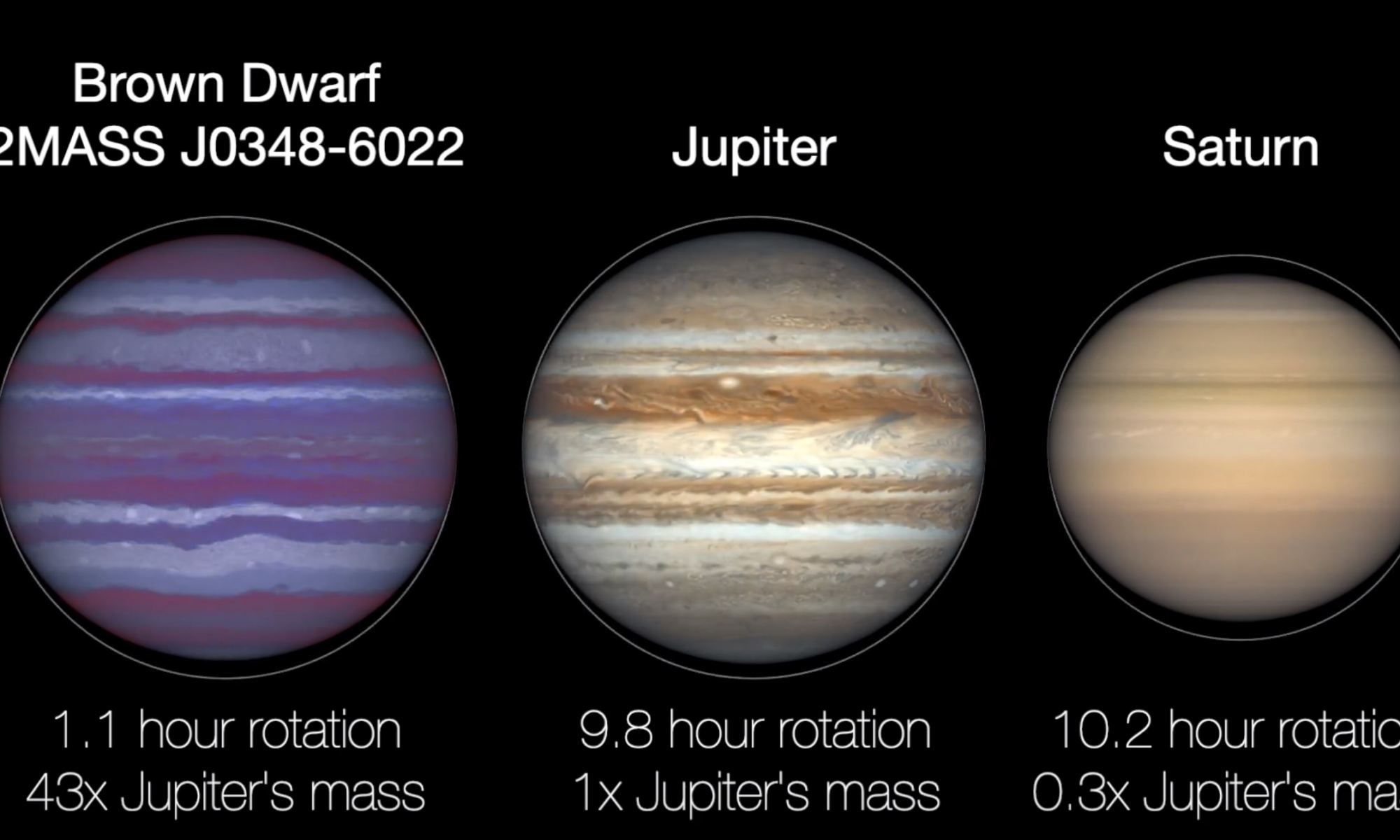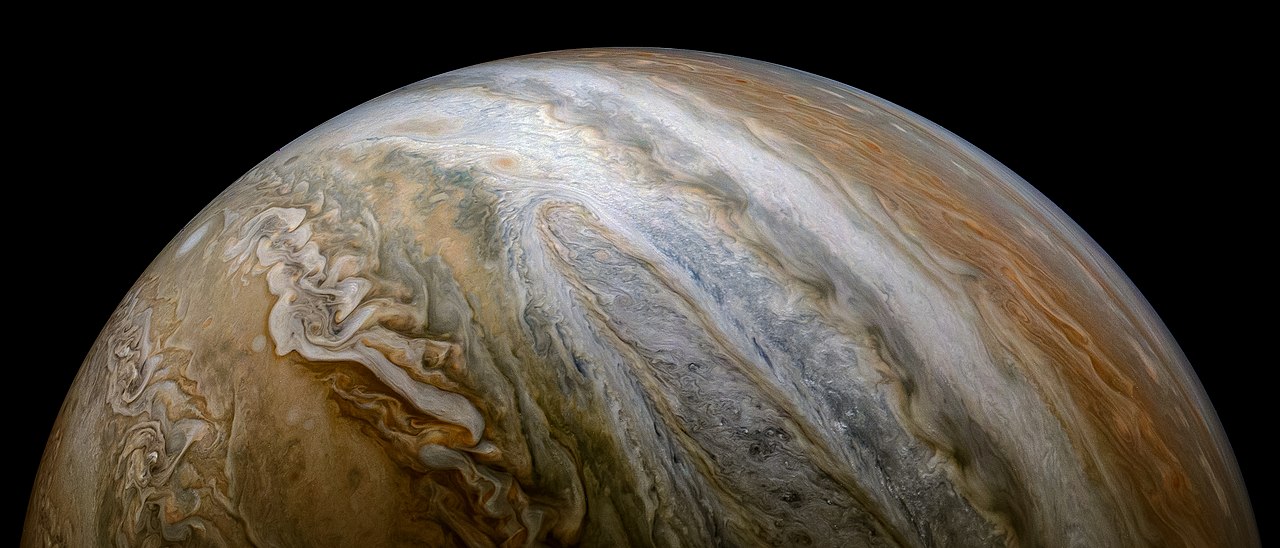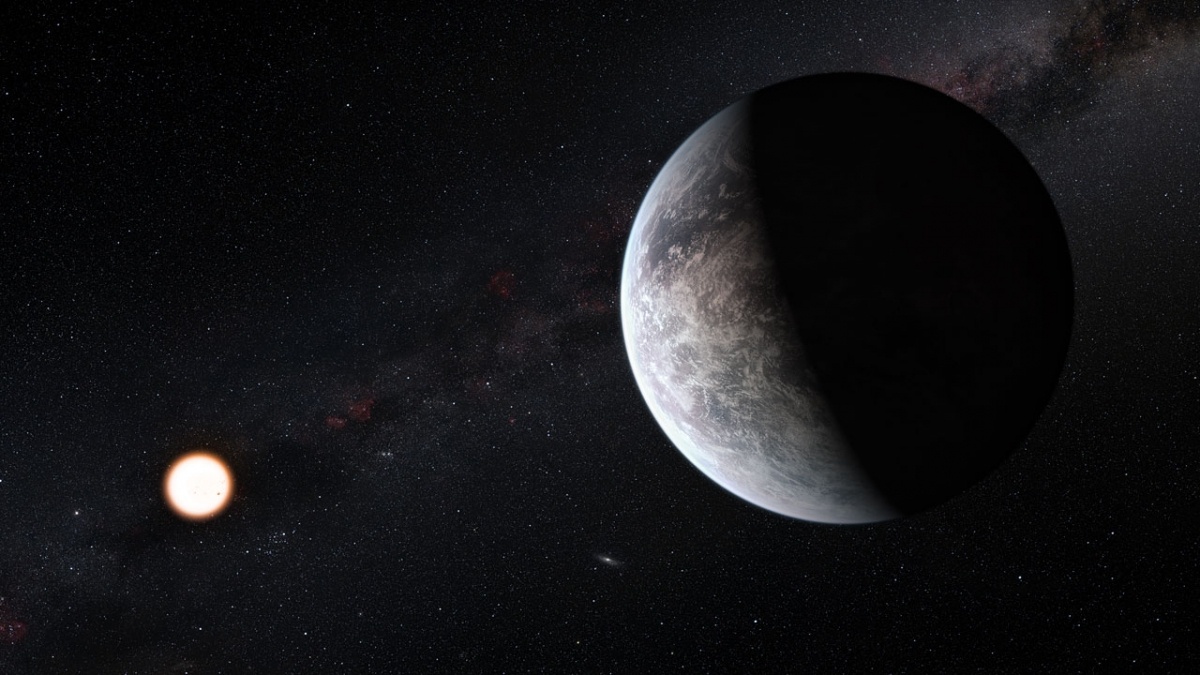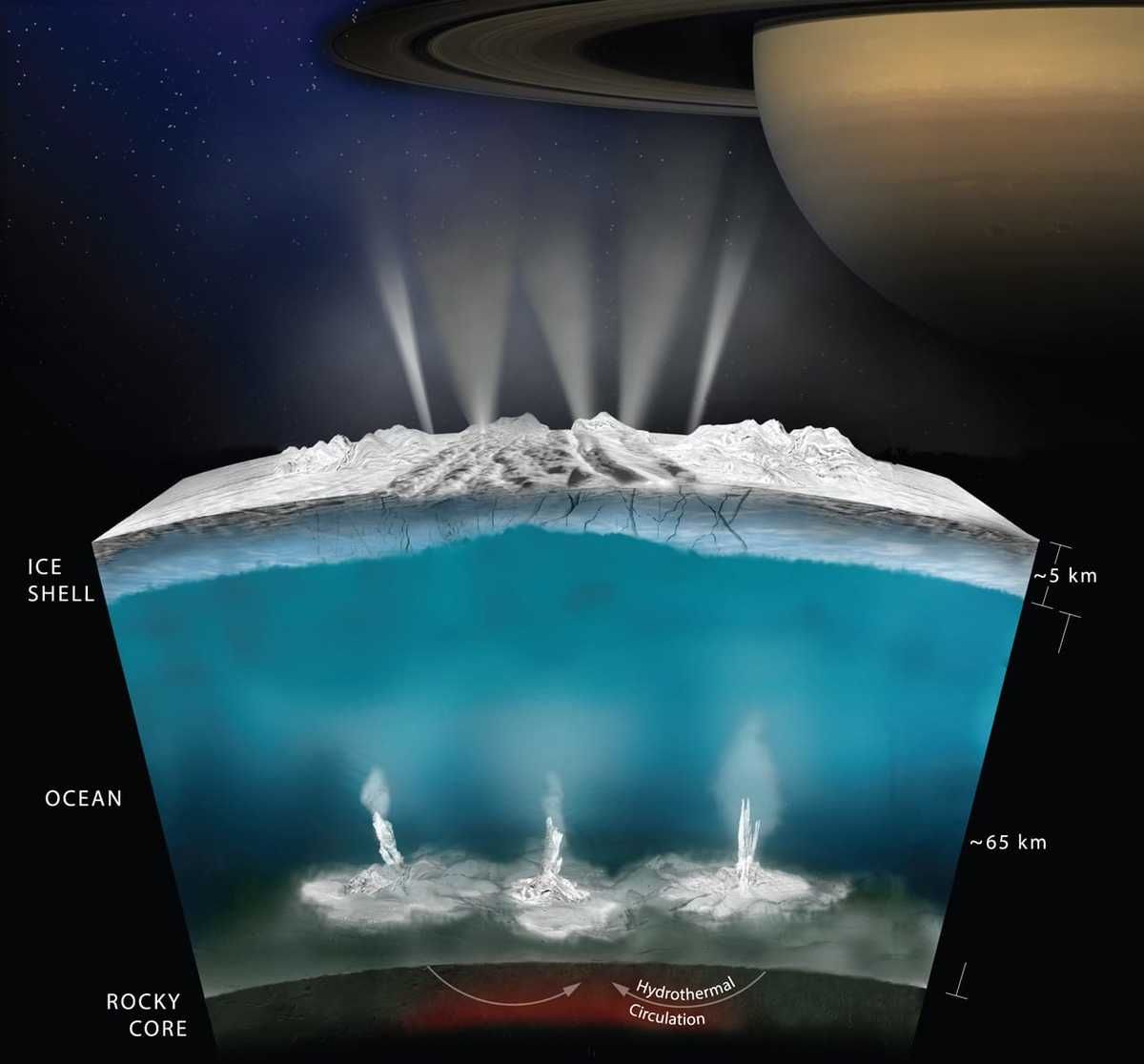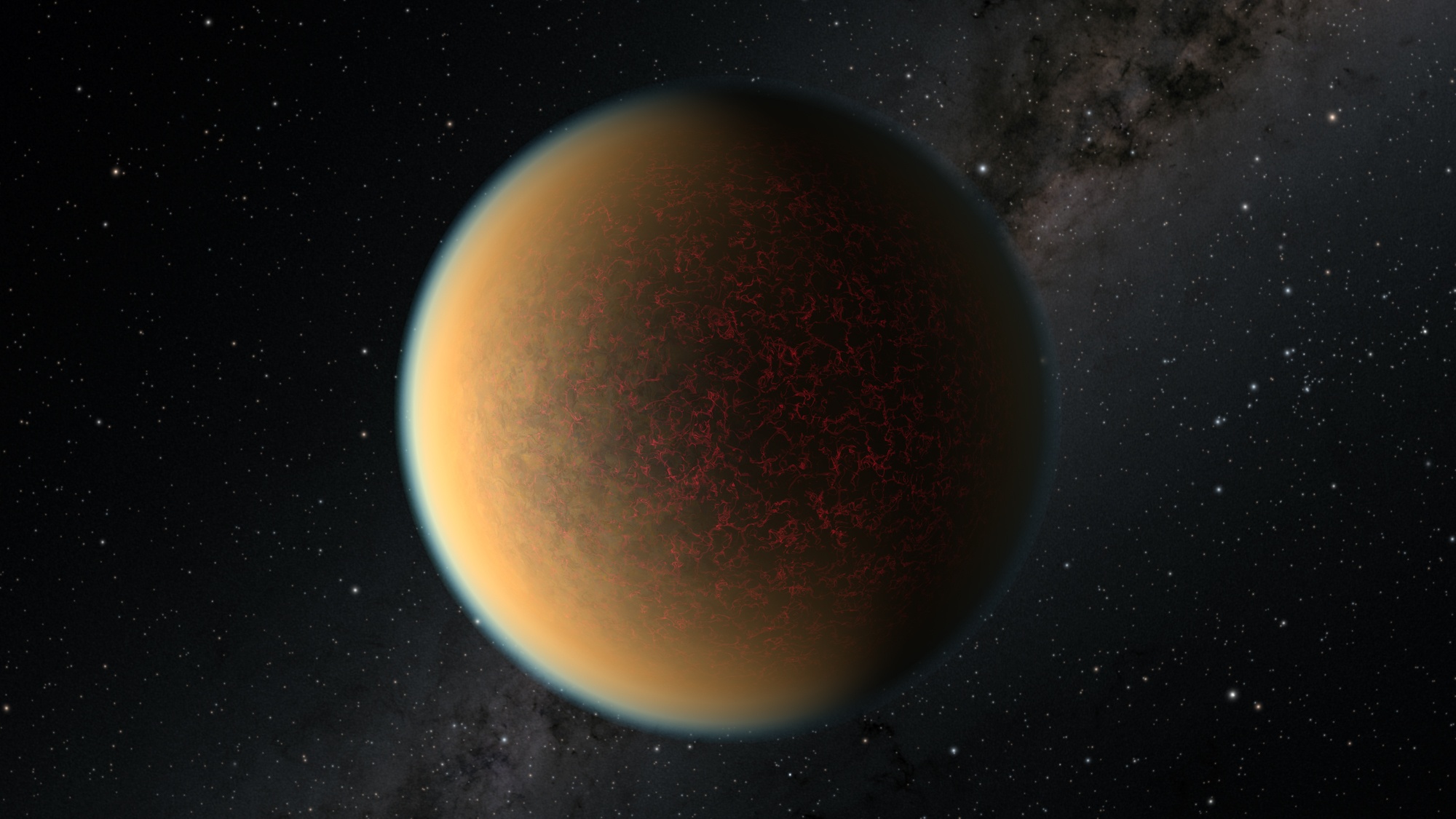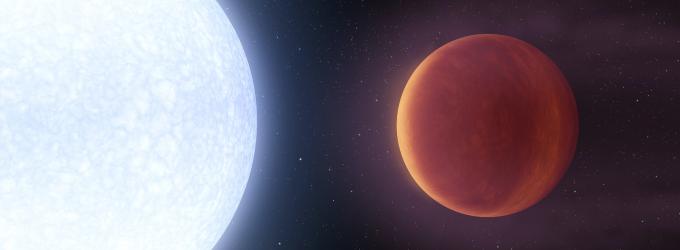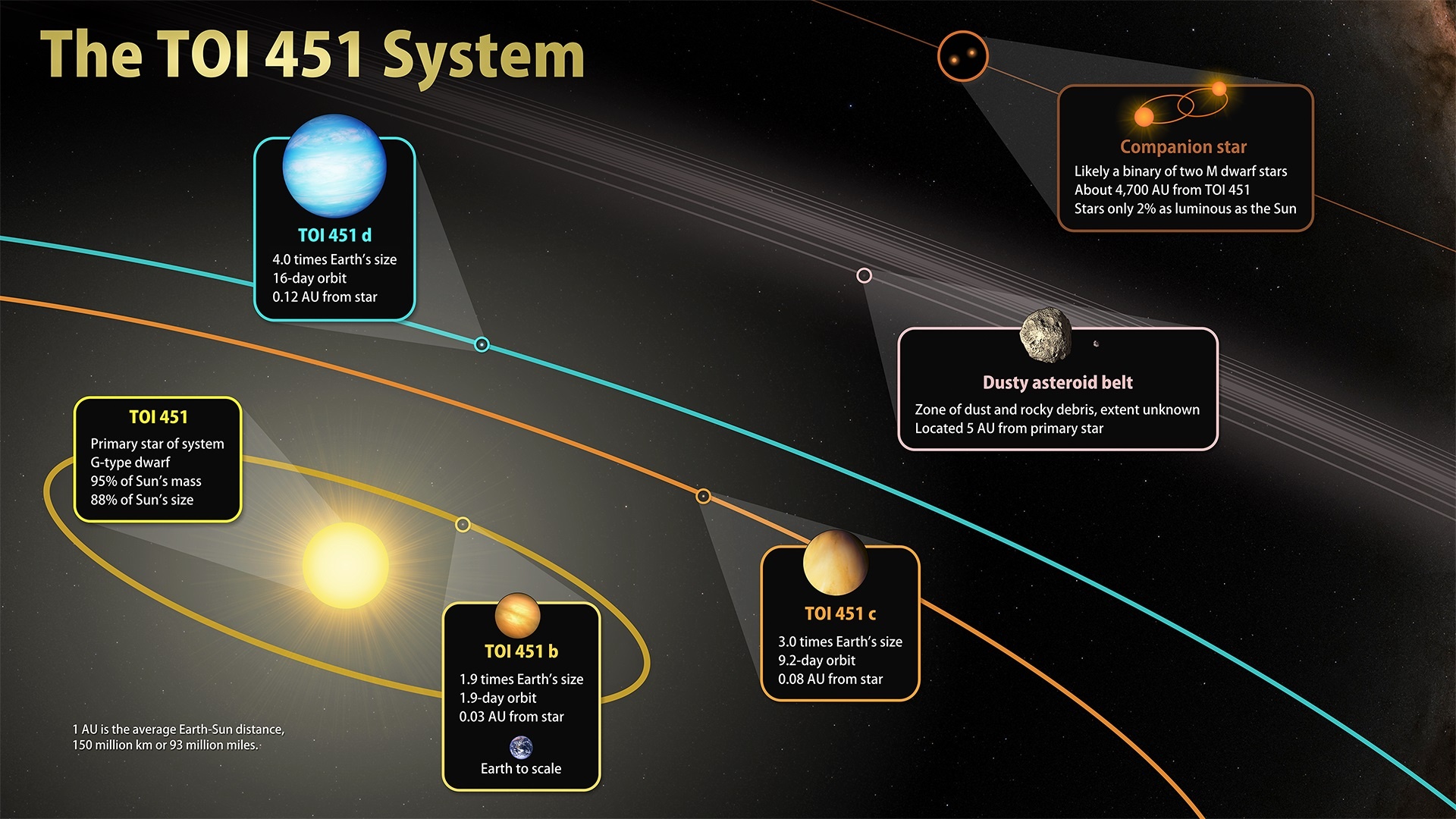One of the best things about the sheer number of exoplanets that astronomers are currently finding is how some are just very different. Those differences can sometimes undermine standing theories, and prompt scientists to start considering new theories that account for the new information. That is undoubtedly what will happen to accommodate a new massive planet found by a team led by Dutch scientists. This planet is unique in one very special way – it is about 110 times farther away from its star than the Earth is from the sun.
Continue reading “Giant Planet is Found at an Extreme Distance From its Star”Brown Dwarfs can Spin so Fast They Almost Tear Themselves Apart
We tend to image planets as spheres. Held together by gravity, the material of a planet compresses and shifts until gravity and pressure reach a balance point known as hydrostatic equilibrium. Hydrostatic equilibrium is one of the defining characteristics of a planet. If a planet were stationary and of uniform density, then at equilibrium, it would be a perfect sphere. But planets rotate, and so even the largest planets aren’t a perfect sphere.
Continue reading “Brown Dwarfs can Spin so Fast They Almost Tear Themselves Apart”Jupiter Could Make an Ideal Dark Matter Detector
So, you want to find dark matter, but you don’t know where to look? A giant planet might be exactly the kind of particle detector you need! Luckily, our solar system just happens to have a couple of them available, and the biggest and closest is Jupiter. Researchers Rebecca Leane (Stanford) and Tim Linden (Stockholm) released a paper this week describing how the gas giant just might hold the key to finding the elusive dark matter.
Continue reading “Jupiter Could Make an Ideal Dark Matter Detector”Roman Telescope Could Turn up Over 100,000 Planets Through Microlensing
Recently we reported on a haul of 2,200 new exoplanets from the 2 year primary mission of the Transiting Exoplanet Survey Satellite (TESS). But that is just the tip of the iceberg in terms of exoplanet hunting. If calculations from NASA are correct the Nancy Grace Roman Space Telescope could detect up to 100,000 new exoplanets when it launches in 2025.
Continue reading “Roman Telescope Could Turn up Over 100,000 Planets Through Microlensing”If Astronomers see Isoprene in the Atmosphere of an Alien World, There’s a Good Chance There’s Life There
It is no exaggeration to say that the study of extrasolar planets has exploded in recent decades. To date, 4,375 exoplanets have been confirmed in 3,247 systems, with another 5,856 candidates awaiting confirmation. In recent years, exoplanet studies have started to transition from the process of discovery to one of characterization. This process is expected to accelerate once next-generation telescopes become operational.
As a result, astrobiologists are working to create comprehensive lists of potential “biosignatures,” which refers to chemical compounds and processes that are associated with life (oxygen, carbon dioxide, water, etc.) But according to new research by a team from the Massachusetts Institute of Technology (MIT), another potential biosignature we should be on the lookout for is a hydrocarbon called isoprene (C5H8).
Continue reading “If Astronomers see Isoprene in the Atmosphere of an Alien World, There’s a Good Chance There’s Life There”Oh, the Irony. There are Likely Water Worlds Everywhere, but They’re Covered in ice and Impossible to Investigate
Liquid water was originally thought to be relatively rare in the solar system. But one of the most important discoveries of the last several decades of planetary science is that liquid water is extremely common, even outside of the orbit of a star that would allow for it on the surface of a planet or moon. It just happens to be covered by a sheet of ice. Scientists at the Southwest Research Institute (SwRI) have now theorized about what the abundance of liquid water means for life throughout the galaxy, and whether it might be more common than originally thought.
Continue reading “Oh, the Irony. There are Likely Water Worlds Everywhere, but They’re Covered in ice and Impossible to Investigate”A Planet Lost Its Atmosphere, So Its Volcanoes Made It a New One
A red-dwarf star called Gliese 1132 or GJ 1132 for short (astronomers and their fun nicknames!) smolders on some 41 light-years from the sun in the southern constellation Vela, just a few degrees away from the southern cross. In 2015, astronomers using the MEarth South telescope array at Cerro Tololo Inter-American Observatory (CTIO) in Chile found an Earth-sized planet orbiting extremely close to the little red star. Known as GJ 1132b, the planet orbits in a blistering 1.6 days. Its original hydrogen and helium atmosphere is thought to have long since been blown away by the powerful stellar winds experienced by the planet due to its extreme proximity to its parent. New observations from the Hubble Space Telescope revealed a surprise from the speedy exoplanet; it seems to have re-formed an atmosphere!
Continue reading “A Planet Lost Its Atmosphere, So Its Volcanoes Made It a New One”Vega Might Have a Planet
Vega is one of the brightest and best known stars in the night (or even twilight) sky. Located in the constellation Lyra, it is only 25 light years from Earth, and about twice our Sun’s mass. And now, astronomers might have found one of the hottest known planets orbiting it extraordinarily quickly.
Continue reading “Vega Might Have a Planet”How Would Rain be Different on an Alien World?

On Titan, Saturn’s largest moon, it rains on a regular basis. As with Earth, these rains are the result of liquid evaporating on the surface, condensing in the skies, and falling back to the surface as precipitation. On Earth, this is known as the hydrological (or water) cycle, which is an indispensable part of our climate. In Titan’s case, the same steps are all there, but it is methane that is being exchanged and not water.
In recent years, scientists have found evidence of similar patterns involving exoplanets, with everything from molten metal to lava rain! This raises the question of just how exotic the rains may be on alien worlds. Recently, a team of researchers from Havard University conducted a study where they researched how rain would differ in a diverse array of extrasolar planetary environments.
Continue reading “How Would Rain be Different on an Alien World?”Just Some of the Planets That TESS Has Found Nearby
Ever since NASA’s Kepler Space Telescope was launched in 2009, there has an explosion in the study of the extrasolar planets. With the retirement of Kepler in 2018, it has fallen to missions like the Transiting Exoplanet Survey Satellite (TESS) to pick up where its predecessor left off. Using observations from TESS, an international team of astronomers recently discovered three exoplanets orbiting a young Sun-like star named TOI 451.
Continue reading “Just Some of the Planets That TESS Has Found Nearby”

